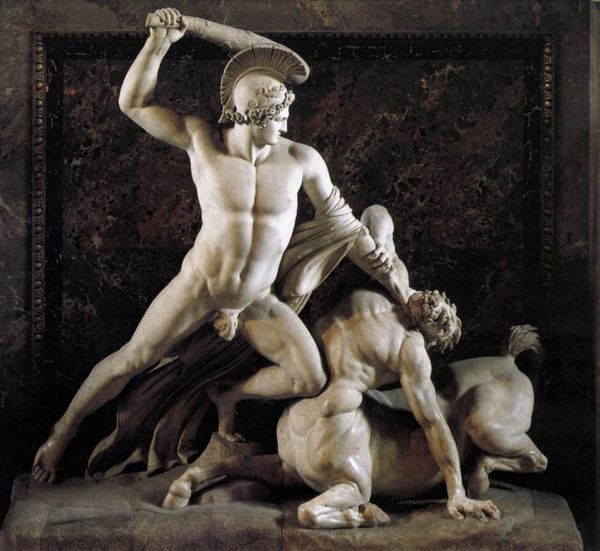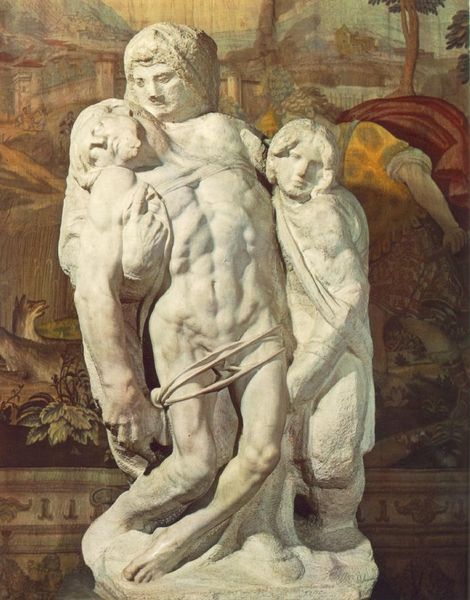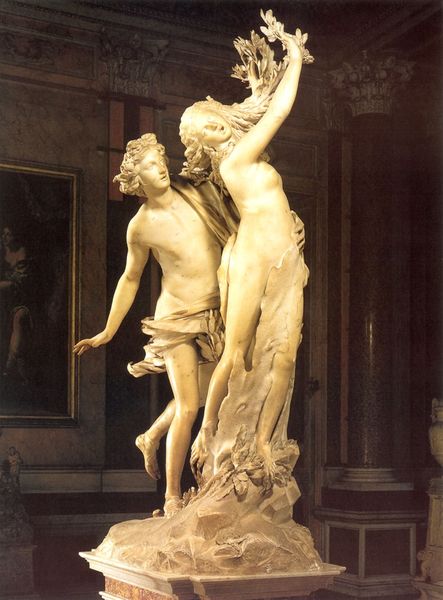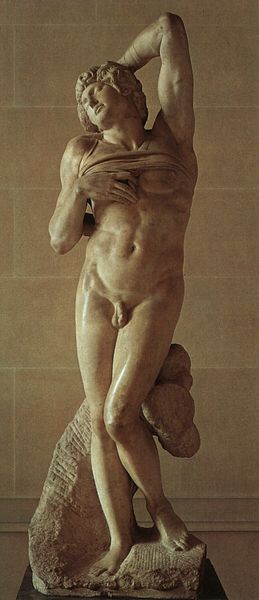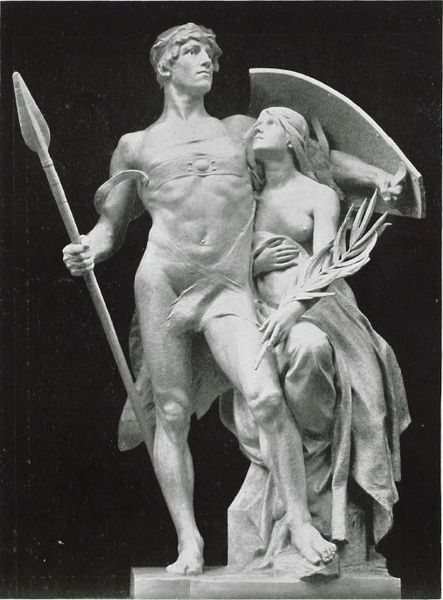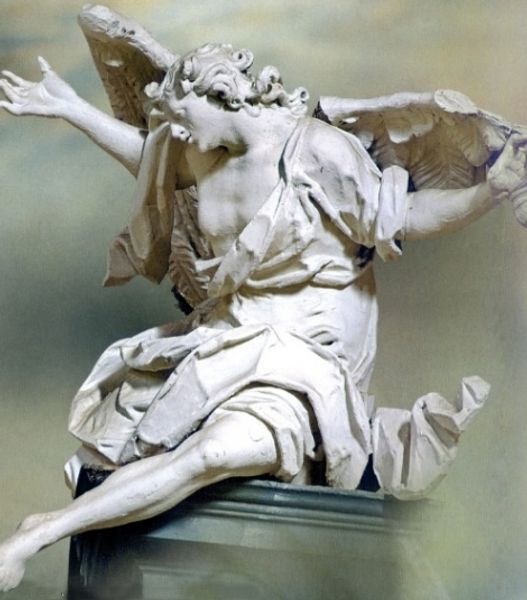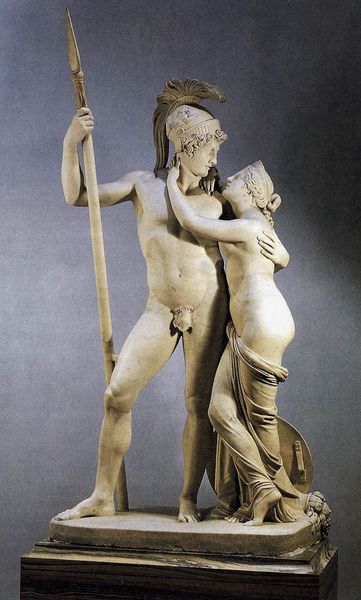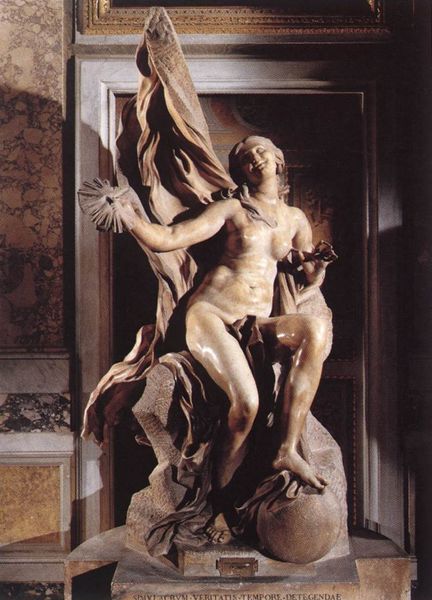
sculpture, marble
#
baroque
#
sculpture
#
figuration
#
sculpture
#
mythology
#
marble
Copyright: Public domain
Curator: Bernini's "Neptune and Triton," created in 1622, practically bursts with dynamic energy. Look at how the artist has captured a pivotal moment in the throes of action. What strikes you initially? Editor: I'm struck by the raw, almost violent, emotion emanating from Neptune's face. He seems less a benevolent sea god and more a figure of untamed power. Is that how he was seen at the time? Curator: Absolutely. The work was commissioned by Cardinal Alessandro Peretti di Montalto, and intended to be installed in the gardens of his Villa Montalto. Placing the sculpture within that garden context underscored a political claim – Neptune was the symbol of authority and control the Cardinal wished to exert. Editor: That trident he holds, poised and ready, certainly drives home that message of control. And Triton seems more like a support or vehicle for Neptune than a figure in his own right, condemned almost. Tell me, what does Triton symbolize here? Curator: Iconographically, Triton, Neptune's son, often embodies the unpredictable, sometimes chaotic, nature of the sea. In this instance, though, he is shown acting as a more of compliant servant or a vehicle. Editor: So the wildness is being tamed, literally used as a foundation for authority. I find the serpent at the base interesting. It almost feels like a forgotten remnant from the ancient imagery around the original myths. Curator: Yes, the serpent is an important symbolic element which often signify primordial chaos and untamed power. By placing this deity above it, Bernini subtly conveys themes of dominion and civilized power. This was displayed for visitors to demonstrate the Cardinal's influence and sophisticated aesthetic taste. Editor: I can certainly see how such a potent image would leave an indelible mark on visitors. The Baroque drama of it all! It truly reflects that tension between the natural world and humanity’s will to dominate it, doesn't it? Curator: Precisely. It reveals how even mythological figures are reshaped to deliver relevant messages and propaganda within a particular historical frame. A masterful, and slightly unsettling, feat.
Comments
No comments
Be the first to comment and join the conversation on the ultimate creative platform.

